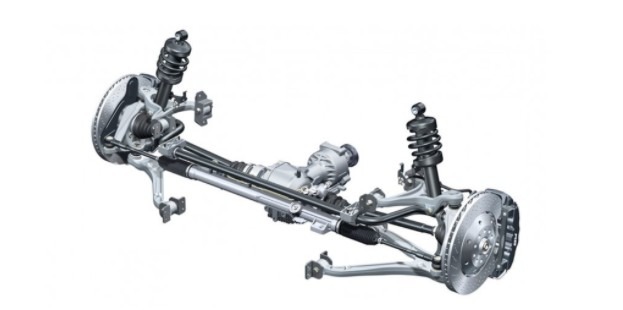As for modern car repair, diagnosing the problem beforehand has become essential. To save smart, problem diagnosis is the best and most feasible. In such a way, having a guide to consult when certain symptoms appear is ideal.
Car accidents can really drive up your insurance cost, in addition to the cost of expensive repairs. The more expensive your vehicle is, the more it will likely cost to repair it. This is why insurance rates for luxury vehicles are so high. If you get a very cheap car insurance no deposit policy, you can save money.
Suspension and Drivetrain
Bad Shocks and Springs: Nose-diving during braking, rocking over bumps, and quick body movements during left-right-left transitions indicate worn or broken shock absorbers. The symptoms for worn-out springs are very similar, except that in this case, the car will lean over like a boat while cornering. Think of it as the difference between a fast lean and a long lean.
Worn-out springs will make your car’s body lean a lot further during cornering, causing your car’s chassis to feel like it’s about to fall over in a sustained turn. The “bounce” test is a good indicator of shock condition. When you press the fender down with your hands and release it, the car should bounce back up and settle down to a steady ride height. More than one bounce cycle after releasing could indicate bad shocks, depending on the car, but three bounce cycles almost always indicate bad shocks.
Tire “Cupping” or “Scalloping”: This is a telltale symptom of worn-out shock absorbers. Tires that appear to have little scoops taken out of the tread or the corner of the sidewall are the result of the tire bouncing up and down rapidly, and that only happens because of worn-out shock absorbers.
Noise While Turning: A single thump during a quick left or right turn is an indicator of both bad ball joints and strut mounts. A sustained grinding or grumbling noise or vibration while turning generally indicates a bad wheel bearing, but could also indicate a bad tire. A bad outer CV joint will typically manifest as a clicking noise while turning, and will get worse if you’re on the brakes or gas while turning, since acceleration forces on the CV joint will cause the mechanism in the CV joint to bind up and release, resulting in a clicking or popping.
Engine Stalling
A great number of things can cause engine stalling – basically anything that the engine depends on to supply or regulate fuel, air or electrical power. But there are a few situations in which stalling can only indicate one or two problems.
Random, at Idle: Most of the time, you can expect a problem with one of the car’s major sensors, like the camshaft position or crankshaft position sensors. Other causes include a loose connection – particularly at the computer wiring harness – or a bad ground strap connection, which completes the electrical circuit from the car to the chassis.
Under Acceleration: You’re doing two things when you step on the gas pedal; you’re opening the main air valve and increasing airflow through the engine, and you’re telling the computer that it’s time to increase the flow of fuel. So, anything that restricts airflow (like a dirty air filter) or causes far too much air to enter the engine (like a vacuum leak) can cause stalling under these conditions, as can clogged fuel injectors, low fuel pressure or extremely high fuel pressure. Sensor problems are an ever-present possibility with any kind of stalling, but in this case it’s likely the mass airflow, throttle position or manifold air pressure sensors.
Under Braking: When you stomp the brakes, you’re closing the throttle plates and depriving your engine of oxygen. A mechanism called the idle air control valve serves as a sort of metered air leak that serves to meter the leak. A malfunctioning idle air control valve, or IAC channels clogged with dirt and sludge, will block this airflow and increase the odds of your car stalling under braking.
Other possibilities include a ruptured vacuum brake booster diaphragm (which would serve as a giant vacuum leak when you hit the brakes), and a weak charging system. Oddly enough, your brake lights can stall the car if your charging system is weak because they suck power that should otherwise go to the car’s ignition system.
Over- or Under-heating: Your car’s coolant system is responsible for shedding engine heat by transporting water in the engine block to the radiator. Three things can cause overheating: Not enough airflow over the radiator, not enough water flow through the radiator, or if the engine produces more heat than the radiator can shed.
Lack of airflow at idle typically happens because of a lack of airflow resulting from a failure of the radiator cooling fans, or the mechanical cooling fan’s clutch. Lack of water flow through the radiator typically happens because of a failed water pump, or because the car’s thermostat valve doesn’t open to allow water to flow through the radiator.
Too much engine heat often results from some kind of serious malfunction; too little oil or oil pressure will allow friction to build up in the engine and overheat it, and excessively fuel-lean mixtures will burn hotter and cause overheating. Excessive engine knock (aka “detonation”) may cause overheating if encountered consistently. Under-heating can happen when the thermostat sticks open, routing coolant through the radiator when it should stay in the engine.
You can buy now pay later car insurance coverage if you are tight on your budget. One of the cheapest auto insurers is Citizens Insurance. Finding the cheapest car insurance coverage will leave more money in your pocket for things like unexpected car repairs.
